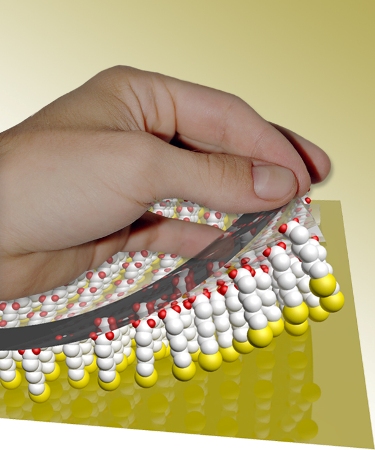Making accurate biomolecular structures at small scales is significant to the advancement of nanotechnology and other related fields. Traditionally, this has been accomplished by using rubber stamps with small features that are enclosed with molecular "inks" and later stamping onto substrate surfaces to produce a molecular pattern. However, molecules tend to disperse on the surface during and after the process of stamping and blur the patterns.

Reactive stamps remove molecules from surfaces to create precise nanoscale patterns.
Researchers from UCLA have reversed this traditional "soft lithography" process in order to address this problem. They utilized stamps that were chemically treated, instead of utilizing a stamp to shift molecules to bare surfaces, to remove molecules placed already on gold substrates and peel away specific molecules through chemical bonds in order to create accurate patterns.
The new process, dubbed chemical lift-off lithography (CLL), eliminates the blurring problems found in earlier techniques and achieves higher-resolution patterning. The research findings are published in the journal Science.
The stamp, utilized in the new process, is designed by using a “master” shaped with expensive and sophisticated tools; it can be used regularly. An oxygen plasma reactivates stamps between each use. The chemical bonds created at the stamp-substrate interface remove boththe molecules in the monolayers as well as the sheet of gold atoms from the substance. The researchers found that monolayers and gold–gold bonds break easily compared to molecule–gold bonds.
During the research, different types of high-resolution patterned features were fabricated, and stamps were refined and reused over and over again with minimum feature deterioration. The research team also found that the remaining monolayer can resist etching exposed gold features. New molecules backfilling into the lifted-off areas allowed patterned protein capture and precise 40 nm chemical patterns were attained.
When individual masters are created, CLL is utilized for high-throughput, high-resolution pattern fabrication. This procedure allows patterns to be moved to substrates, and various stamping strategies can be utilized to produce nanometer-scale patterns with high fidelity on gold substrates.
Source: http://www.ucla.edu/

No hay comentarios.:
Publicar un comentario